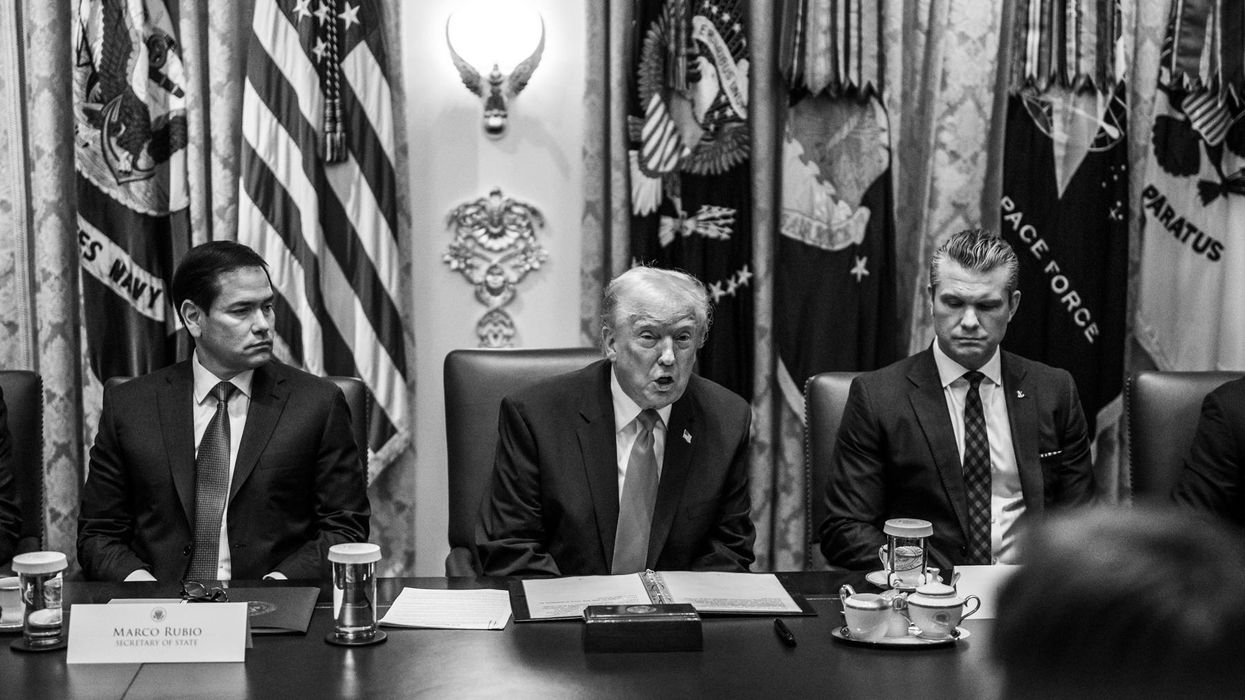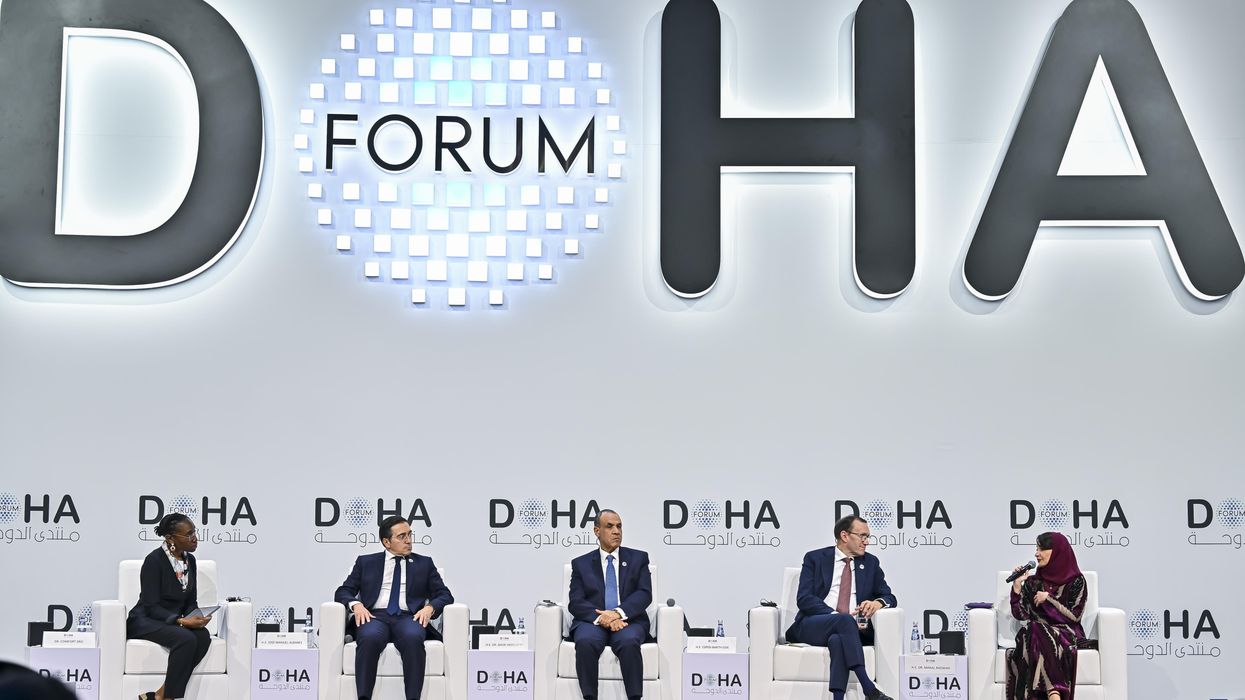On the 66th anniversary of what is known as the “Student Day” in Iran, university students in Tehran and some other cities held protest rallies to commemorate the killing of three students by security forces of the Pahlavi monarchy on December 7, 1953, amid demonstrations against then-U.S. Vice President Richard Nixon’s visit to the country. In August of that same year, a U.S./U.K.-orchestrated coup had successfully overthrown the nationalist government of Mohammad Mosaddegh and restored Mohammad Reza Shah Pahlavi’s rule.
This year’s student protests received scant coverage in English-language outlets. Ironically, though, the protests were a target of massive social media vitriol by Iran’s exiled pro-Trump “opposition” campaigning for regime change and restoration of monarchical reign in Iran under the leadership of Reza Pahlavi, the deceased Shah’s eldest son. The hawkish cabal — which has been referred to as a “fake opposition” in pursuit of self-serving political agendas and out of touch with complex realities of Iranian society — slammed the peaceful student rallies as part of a “reactionary” alliance of Islamists and socialists bent on ensuring the survival of the Islamic Republic.
Condemning intensified domestic authoritarianism and the U.S.-led “maximum pressure” policy at the same time, the student demonstrators rejected hardliners on both sides, echoing an earlier statement by Green Movement leader Mir Hossein Mousavi on the November protests across Iran.
In his message, the 77-year-old former prime minister, who has been under house arrest since 2010, denounced the brutal state repression of protests — with a confirmed death toll of 208 so far, according to Amnesty International — and compared it to the Pahlavi regime’s deadly crackdown on revolutionaries in Tehran’s Jaleh Square in September 1978, dubbed locally as the “Black Friday.”
“The murderers of 1978 were representatives of a non-religious regime while the officers and shooters [of November 2019] represented a religious government,” Mousavi said, adding that back then “the commander in chief was the Shah, and today he is the Supreme Leader with absolute powers.
“It would suffice for the [ruling] establishment to heed the repercussions of the Jaleh Square massacre,” he concluded, taking a thinly veiled swipe at pro-Pahlavi monarchists who have been espousing regime change in Iran by any means, including what would amount to a devastating military intervention. Notably, the 1978 Black Friday protests — during which nearly 100 people were shot dead — further inflamed popular dissent against the Shah, culminating in the 1979 revolution only a few months later.
Exiled pro-Trump opponents of the Islamic Republic decry the Green Movement on the grounds that its leaders, including Zahra Rahnavard and Mehdi Karroubi, are part of the ruling system and thus cannot lead Iran into a free and democratic future. Yet Green Movement leaders have braved almost a decade (and counting) of house arrest and stood their ground against the ruling elite to protect the relevance and dignity of Iran's "real" opposition and democratic forces at home.
Mousavi’s audacious statement condemning the Iranian leadership for violently crushing the nationwide protests took many off guard, particularly the pro-Pahlavi types who expected him to condone, if not vindicate, the brutality much like pro-establishment reformists have done. They now see the Green Movement as a serious rival in the war of popular anti-dictatorship narratives, which unsettles their relentless efforts to appropriate Iranians’ legitimate protests against tyranny and costly struggle for change.
Indeed, a salient source of the Green Movement's popularity and legitimacy is its simultaneous opposition to the Islamic Republic's brutal authoritarianism, on the one hand, and U.S. "maximum pressure" and mass starvation campaign on the other.
This politically and morally responsible stance, based as it is on respect for human rights as well as a realistic understanding of Iran's long-term national interests, disrupts the hawkish narrative that only regime change — either forced from within by recourse to a starvation-into-revolt campaign or imposed from outside through military intervention — can save the country and guarantee its national prosperity, regardless of what costs and consequences it might entail.
Mousavi's human rights record as a former prime minister (1981-1989) warrants fair and independent scrutiny, particularly with respect to the mass execution of political prisoners authorized by Ayatollah Khomeini in 1988. But he holds far more influence and legitimacy on the ground than the pro-sanctions and anti-diplomacy son of the late Shah who has lived abroad since 1979 and whom regime change hawks promote as its "post-overthrow" leader despite his lack of leadership experience or charisma.
Not only is the pro-Pahlavi monarchists’ reliance on Trump to carry out their regime overthrow agenda not a safe bet — primarily due to the U.S. president’s “transactional” and profit-centered approach to foreign policy — but ironically enough, the “fake opposition” also bears numerous resemblances to the Islamic Republic itself, particularly when it comes to engaging with critics and alternative voices.
The scandalous saga of the U.S.-funded “Iran Disinformation Project” —where a number of Iranian hawks illicitly used State Department resources to smear human rights activists and journalists of differing political views — is a characteristic example of how the exiled regime change cabal reproduces some of the most toxic practices of the Iranian political establishment and thus helps reinforce what they claim in rhetoric to be so vehemently opposed to.
Moreover, by embracing Trump’s “maximum pressure” sanctions campaign, the pro-Pahlavi movement has, as I previously noted, "undercut the middle class as a historic engine of meaningful change in Iranian society. Similarly, the working class, on whose radicalization and revolt the opposition has pinned its hopes, is also bearing the brunt of sanctions and is being increasingly disabled rather than enabled by them.”
As a result, an increasing number of Iranians are expressing grave concerns on social media that a potential monarchist successor to the Islamic Republic might as well prove to be worse than the current clerical regime, in terms of respect for human rights, democratic pluralism and the rule of law.
While aware of the fact that some of the Islamic Republic's policies and practices — systemic corruption and mismanagement, violent repression of domestic dissent, and provocative interventions in neighboring nations — are not sustainable and could structurally lead to its collapse, the Green Movement, unlike the "fake opposition,” is wary of promoting foreign-sponsored regime change because it believes it would spark a civil war and territorial disintegration.
If we take the U.S. Special Representative for Iran Brian Hook’s word that “the regime could have murdered over 1,000 Iranian citizens” in less than a week, how many more civilians might be killed if popular protests persist and escalate into a civil war? What if Tehran triggers a major regional conflict in response, to divert attention from its domestic predicament and rally the people around a more decisive fight against foreign aggression?
These might be inescapable outcomes if the Islamic Republic and the United States do not change course, but contrary to the overseas-based “fake opposition,” the Green Movement seeks to prevent rather than accelerate them by supporting peaceful resistance at home and active diplomacy abroad.
















